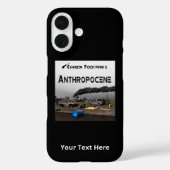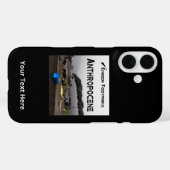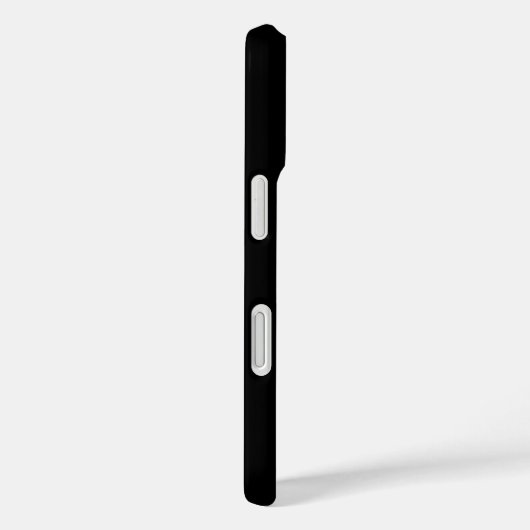Over Casemate Hoesje
Aangeboden door
Over dit ontwerp
Kooldioxidevoetafdruk - Antropoceen Case-Mate iPhone Case
Cover art for double platinum album "Anthropocene" by the mythical rock group The Carbon Footprints. It portrays a dystopian future of burning, abandoned cities, rusting automobiles, oil and nuclear waste drums; polluted skies and water, and denuded landscapes resulting from humanity's disregard for the environment. Customize by adding your own trxt.
The album includes the hit songs "Meltdown," "Extinction Event" and "Drill, Baby, Drill." As early as 1873, the Italian geologist Antonio Stoppani acknowledged the increasing power and effect of humanity on the Earth's systems and referred to an "anthropozoic era'.." Anthropocene is a term proposed by Nobel Prize-winning scientist Paul Crutzen, to describe a geological epoch of human dominance of biological, chemical and geological processes on Earth. The term, like other time period designations (Pleistocene) has Greek roots: anthropo meaning "human" and cene meaning "new." The designation Anthropocene" would serve to mark the evidence and extent of human activities that have had a significant global impact on the Earth's ecosystems. Crutzen regards the influence of human behavior on the Earth's atmosphere in recent centuries as so significant as to constitute a new geological epoch. To date, the term has not been adopted as part of the official nomenclature of the geological field of study. In 2008 a proposal was presented to the Stratigraphy Commission of the Geological Society of London to make the Anthropocene a formal unit of geological epoch divisions. A large majority of that Stratigraphy Commission decided the proposal had merit and should therefore be examined further. Steps are being taken by independent working groups of scientists from various geological societies to determine whether the Anthropocene will be formally accepted into the Geological Time Scale. Many species have gone extinct due to human impact. Most experts agree that human beings have accelerated the rate of species extinction, although the exact rate is controversial, perhaps 100 to 1000 times the normal background rate of extinction. In 2010 a study published in Nature found that "marine phytoplankton — the vast range of tiny algae species accounting for roughly half of Earth's total photosynthetic biomass - have declined substantially in the world's oceans over the past century. Since 1950 alone, algal biomass decreased by around 40%, probably in response to ocean warming - and the decline has gathered pace in recent years. Some authors have postulated that without human impacts the biodiversity of this planet would continue to grow at an exponential rate. The implications being that climate change is accelerating due to, or exacerbated by, human activities. One suspected geological symptom resulting from human activity is increasing leves of carbon dioxide (CO2) in the atmosphere. During glacial-interglacial cycles of the past million years, natural processes have varied CO2 by approximately 100 parts per million (ppm) (from 180 ppm to 280 ppm). At the onset of the Industrial Age atmospheric concentration of CO2 was approximately 280 ppm. Recently CO2 levels monitored at the Mauna Loa Observatory in Hawaii reached 400 ppm. This signal in the Earth's climate system is especially significant because it is occurring much faster, and to an enormously greater extent, than previous, similar changes. Most of this increase is due to the burning of fossil fuels. Smaller fractions are the result of cement production and land-use changes such as deforestation. The Anthropocene has no precise start date, but based on atmospheric evidence may be considered to start with the Industrial Revolution (late eighteenth century). Other scientists link the new term to earlier events, such as the rise of agriculture and the Neolithic Revolution (around 12,000 years ago). Evidence of relative human impact such as the growing human influence on land use, ecosystems, biodiversity, and species extinction is controversial; some scientists believe the human impact has significantly changed (or halted) the growth of biodiversity. Those arguing for earlier dates posit that the proposed Anthropocene may have begun as early as 14,000 to 15,000 years ago, based on lithospheric evidence; this has led other scientists to suggest that the Anthropocene began many thousand years ago; this would be closely synchronous with the current term, Holocene.
Ontwerp van international designer
Klant beoordelingen
4.8 van 5 sterren beoordeling5 aantal beoordelingen
5 Reviews
Beoordelingen voor identieke producten
5 van 5 sterren beoordeling
Door M.3 september 2022 • Geverifieerde aankoop
Apple iPhone 17 Pro Max, Tough
Zazzler recensent programma
Stevig hoesje. Mijn zoon is er heel erg blij mee. Mooie print en met de naam van mijn zoon erbij heel persoonlijk: echt zíj́n telefoon
5 van 5 sterren beoordeling
Door Meta G.25 juni 2018 • Geverifieerde aankoop
Apple iPhone 11, Tough
Zazzler recensent programma
Ik had dit hoesje al voor mezelf voor de iPhone SE. Mijn schoonzus vond dit zo leuk dat zij er ook een wilde, maar dan voor de iPhone 5C. Allebei de hoesjes passen perfect om de telefoon. Het ontwerp en de kleuren zijn exact zoals op de site wordt weergegeven. Lekker felle kleuren!
5 van 5 sterren beoordeling
Door R.28 september 2019 • Geverifieerde aankoop
Apple iPhone 11, Barely There
Zazzler recensent programma
Het ontvangen object is zeer mooi. Het is een correcte weergave van de foto op internet
Tags
Andere Info
Product ID: 256488822365868341
Ontworpen op: 20-4-2025 7:02
Rating: G
Recent bekeken items




